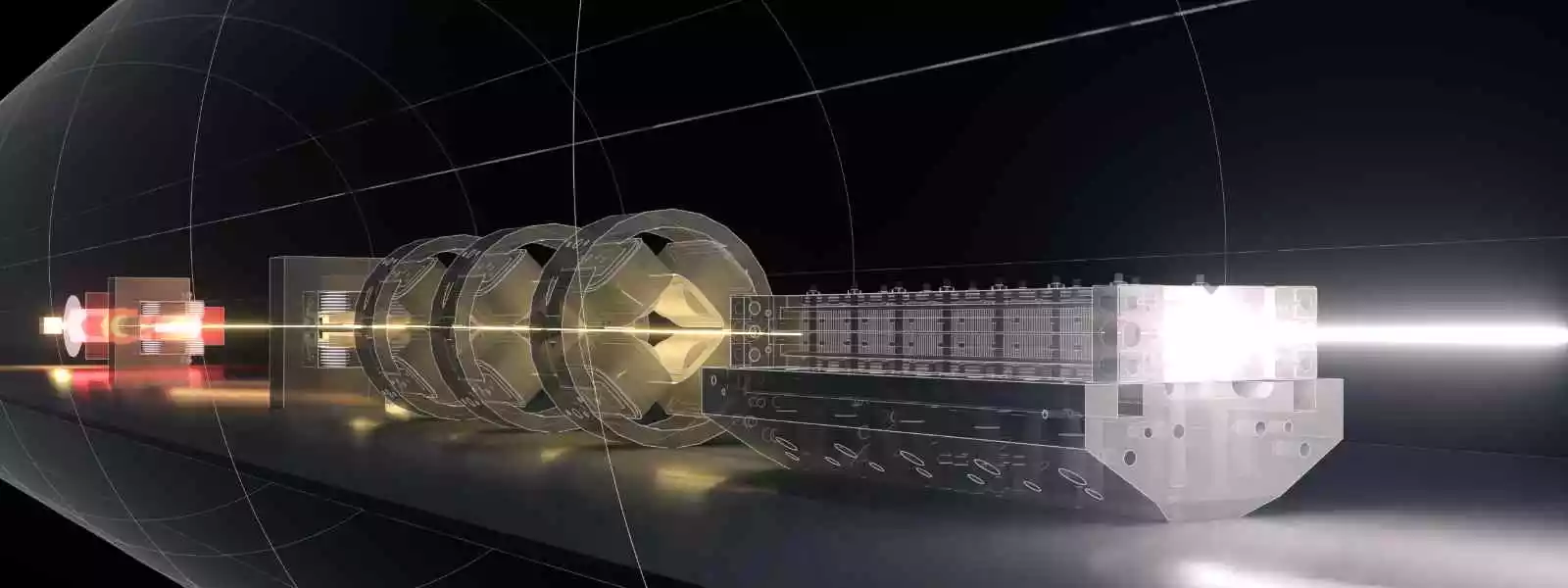The University of Strathclyde’s simulation of ice-cold electron beams could help shrink X-Ray free-electron lasers (X-FELs) to a minuscule proportion of their current size.

Image Credit: University of Strathclyde
X-FELs, often called “engines of discovery,” transform the kinetic energy of an electron beam into strong photon pulses that extend down to hard X-Ray wavelengths. X-FELs are utilized for a variety of purposes, including hot-dense matter research, resolving the structure of complex biomolecules for new drugs, and studying the characteristics of materials for next-generation microchips.
Electron beams swinging along a path inside an undulator, a device with an alternating magnetic field, are at the center of FELs. The wiggling motion causes the electron beam to release bursts of photons, and at the radiation wavelength, a positive feedback effect causes the electron beam to form micro-bunches. As a result, the radiation strength increases exponentially along the undulator and intensifies.
Only if the electron beam is of excellent quality at relativistic energy can this self-organizing phenomenon take place. Modern X-FELs, which can cost up to a billion pounds, are kilometer-scale, precisely calibrated devices that must fulfill the strict requirements for electron beam quality. As a result, there are very few X-FEL facilities in operation worldwide, and there are currently none in the UK.
A Plasma Wakefield Accelerator (PWFA) outfitted with the “Trojan horse” advanced electron injection technique known as plasma photocathode could generate electron beams 100,000 times brighter than the current best, according to Strathclyde research that uses high-fidelity start-to-end simulations. This is because the distribution with minimal momentum spread results in extremely cold electron beams.
In addition, the PWFA features an accelerating electric field with a capability of tens to hundreds of gigavolt-per-meter, allowing the accelerator to be implemented on a centimeter scale as opposed to the kilometer scales of conventional accelerators.
The study investigates the extraction, transportation, isolation, and injection of ultra-high brightness, ice-cold electron beams from plasma photocathode PWFA into an undulator without charge and quality loss; they do not “melt” or lose their coldness.
The ultrahigh-quality electron beam, when focused onto an undulator, generates strong, coherent, laser-like photon pulses with pulse durations in the attosecond (1×10–18 of a second) range.
In contrast to modern, kilometer-sized X-FEL devices, the complete system may have a spatial footprint of just a few tens of meters. This is in addition to the extremely high quality of the electron and subsequent photon pulses.
The three milestones reached in the study, in the opinion of the researchers, could serve as a springboard for the development of ultra-compact X-FELs of the next generation. As part of the extensive UK X-FEL project, the work was published in the journal Nature Communications.
The prospects of ultra-compact plasma-X-FELs based on this scheme are mind-boggling. Our results are important first milestones, but much more work is ahead of us towards experimental realization of the approach.
Fahim Habib, Lead Researcher and Research Associate, Department of Physics, University of Strathclyde
Professor Bernhard Hidding of Strathclyde, who led the project, stated, “The first experimental evidence for plasma photocathode injection in PWFA was obtained in our Trojan Horse collaboration at our strategic partner Stanford’s SLAC FACET facility. Now, with our program at the successor facility SLAC FACET-II, we aim to exploit the true potential of the scheme in terms of beam quality and stability.”
Dr. Brian McNeil, a Reader in the Department of Physics, further added, “Brightness is the key performance parameter for free-electron-lasing. If electron beams as bright and short as shown in our computational study can be realized from plasmas, this could have an enormous impact on photon science.”
NeXource: Next-generation Plasma-based Electron Beam Sources for High-brightness Photon Science is a parallel project being worked on by Professor Hidding that is supported by the European Research Council.
In 2022, Dr. McNeil received the worldwide Free-Electron-Laser Prize in honor of his exceptional contributions to the field.
Journal Reference
Habib, A. F., et al. (2023) Attosecond-Angstrom free-electron-laser towards the cold beam limit. Nature Communications. doi:10.1038/s41467-023-36592-z.